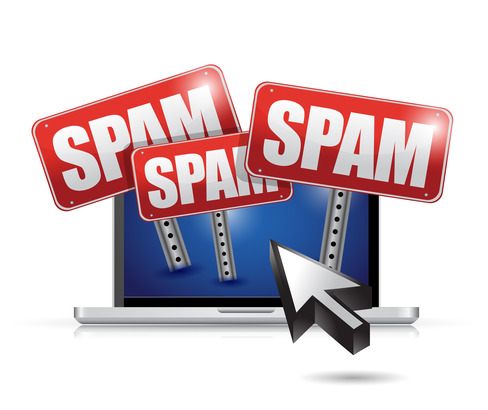- Order Now
1.855.ENDLAYER
Spam Tips from EndLayer: Kill Your Junk Email Fast
 Sometimes it seems like the war on spam never ends.
Sometimes it seems like the war on spam never ends.
We all hate unwanted email messages and blog comments – but how do we get rid of them? Here at EndLayer, we just discussed some handy tips for defeating spammers... and we’ve got more for you.
The EndLayer team is dedicated to preventing spam and maintaining world-class online security, so we’ve compiled another list of helpful anti-spam tips and tricks to help you out. (If you missed the first two posts in the “EndLayer Guide to Spam” series, click here and here.)
Spam happens, so let’s deal with it.
Tip #1: Make your email addresses hard to guess.
(We’re talking about those disposable addresses we mentioned in the last article.) Sometimes, spammers just guess lots of random addresses until they hit on one that works. So make your email hard for them to guess. Use underscores, dashes, numbers and word segments, and don’t be afraid to make them longer and include multiple words. Spammers will be confused. And you will be glad.
Tip #2: Don’t be afraid to assume the worst.
By that, we mean “Assume that any mail from an unknown sender is spam.” If you get a message from someone that’s not in your address book, filter it to your junk folder. (You can get programs that do this automatically, but you may annoy real people who are trying to contact you, so be forewarned.)
Tip #3: Never, never use your primary email address to sign up for anything.
You’re just asking to be spammed.
Tip #4: Don’t open spam or suspected spam messages. Spammers can track the messages that you’ve opened – and then they send you more and more spam because they know you’re more likely to open those messages, too. (And of course, don’t ever, ever click on links in spam messages. You knew that.)
Tip #5: Pick a, Internet service provider (ISP) that hates spam. Before you choose an Internet provider, do your research and make sure you can check off these bullet points:
- The provider cracks down hard on spamming customers.
- They don’t allow network harvesting.
- They don’t host “spamvertised” sites.
- They filter incoming spam.
If your provider lives up to these expectations, you have a much better chance of avoiding spam.
Tip #6: Don’t just delete your spam folder automatically.
Filters aren’t perfect. Sometimes you’ll miss a legitimate message because it got mistakenly categorized as spam.
Tip #7: Use ISP-supplied spam headers.
Many Internet service providers run a spam filter like
SpamAssassin on their mail servers. The program adds headers to “suspicious” incoming emails, letting you know that the message might be spam. To filter for spam using this type of junk mail headers, just set up a rule in your email client that any messages tagged “X-Spam-Status: Yes” go straight to your junk folder. (Be aware, though, not all email clients offer this service. Outlook Express doesn’t, for instance. Maybe someday.)
Tip #8: Report your spam with SpamCop.
SpamCop takes a lot of the work out of reporting spam: it analyzes your junk mail and complains to the right authorities for you. Here’s how to submit a SpamCop report:
- Access the source of the spam message in your email client.
- Copy and paste the source in the SpamCop input field.
- Hit Process Spam and then Send Spam Report(s) Now.
Tip #9: Let EndLayer handle your spam. Sorry, we just had to say it. Nothing slips by our experienced IT staff – unsolicited mail, security breaches, you name it. We’re on top of it 24/7.
For the next article in our “EndLayer Guide to Spam,” click here. We’ve compiled some of the most useful spam filters for the Mac and Windows OS’s.





